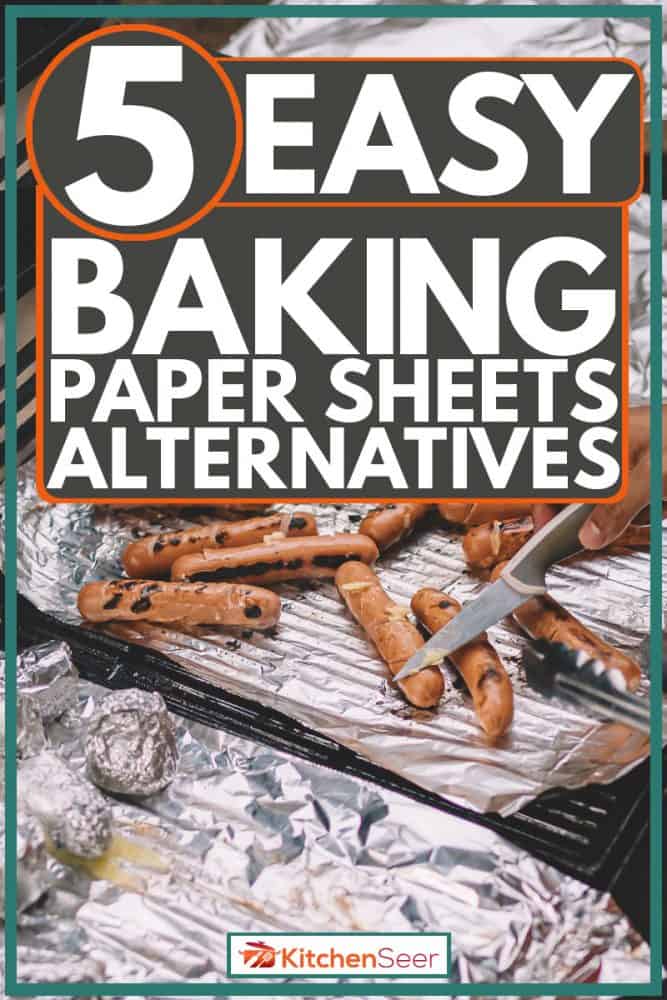 Every baker wants to lift out perfectly formed baked goods from their bakeware. Stuck-on corners and bottomless cakes simply won’t do! But if you have run out of baking paper you might wonder what alternatives you can use. We’ve found the best baking paper alternatives, and you will be happy to know that most are already in your kitchen.
Every baker wants to lift out perfectly formed baked goods from their bakeware. Stuck-on corners and bottomless cakes simply won’t do! But if you have run out of baking paper you might wonder what alternatives you can use. We’ve found the best baking paper alternatives, and you will be happy to know that most are already in your kitchen.
As an alternative to baking paper or parchment paper, you can use:
- Aluminum foil
- Silicone baking mat (or Silpat)
- Silicone mold
- Grease (butter, cooking oil, etc.)
- Cooking spray
Keep reading, and we will tell you what makes parchment paper so unique for baking. We’ll also take a closer look at the alternatives so you can be sure to easily retrieve your baked goods every time.
Baking Paper Alternatives
Baking paper, or parchment paper, is useful to have on hand in your kitchen because it is non-stick, moisture-resistant, and heat-resistant. Baking paper is commonly used for the following:
- Cover the countertop to measure ingredients over; pick-up and funnel ingredients into your mixing bowl.
- Roll out dough on parchment paper.
- Line sheet pans, bakeware, and pizza stones with non-stick parchment paper for easy retrieval.
- Poach foods, like fish and vegetables, by wrapping with parchment paper.
- Wrap foods for storage.
If you want to bake and do not have parchment paper available, try using any of these alternatives in your oven.
Aluminum Foil
You can line your baking sheet, pan, or bakeware with aluminum foil. Remember, however, that aluminum foil does not have non-stick properties. It will help to protect your pan for a quick cleanup, but you might want to grease the surface of the aluminum foil to prevent food from sticking.
Consider using heavy-duty aluminum foil for baking, because its extra thickness withstands high temperatures better than normal aluminum foil.
Click here to find this on Amazon.
Silicone Baking Mat (Or Silpat)
Flexible, heat-resistant silicone baking mats feature a non-stick surface. Easy to clean, dishwasher safe mats can be reused for several years. Silicone baking mats are oven, microwave, and freezer safe.
Click here to find this on Amazon.
Silicone Mold
Flexible, non-stick molds let you easily pop-out delicate meringues, chocolates, muffins, and other foods. Dishwasher safe, use silicone molds again and again for either baking, microwaving, or freezing foods.
Click here to find this on Amazon.
Grease (Butter, Cooking Oil, Etc.)
Using your preferred grease, apply to bakeware by wiping gently along the bottom and sides of the pan by using a paper towel or soft cloth. You can either choose a flavor profile like butter, suet, or coconut oil, or keep it relatively flavorless by using canola oil or vegetable shortening.
For additional ease of retrieving your baked goods, sprinkle flour into the greased pan and tap the pan gently, to move the flour, coating the bottom and sides of the pan.
Click here to find this on Amazon.
Cooking Spray
Apply a fine layer of non-stick by using cooking spray. A can of cooking spray contains cooking oil, lecithin, and either a type of propellant or air pressure to make the ingredients sprayable.
Click here to find this on Amazon.
Can I Use Normal Paper Instead Of Baking Paper?
We recommend that you not use normal paper for baking because you do not know the temperature at which the paper will ignite. It is very risky since some types of paper burn more easily than others. Baking paper does not burn because it has been treated with silicone.
Can I Substitute Wax Paper for Parchment Paper?
Here again, we caution against this with a resounding “No!” Wax paper is both non-stick and moisture resistant because it has been treated with a thin coating of wax on each side. But, wax paper is not heat-resistant. The wax coating can melt or even catch fire in hot oven temperatures.
Don’t get us wrong, wax paper certainly has its place in the kitchen. It can be used to:
- Cover the countertop to measure ingredients over; pick up gently and either funnel ingredients into your mixing bowl or funnel excess ingredients back into the storage container.
- Cover the countertop to roll out dough (pie, pizza, bread, etc.) for a non-stick retrieval. Afterward, clean up less mess by simply lifting the wax paper containing the excess flour and discard.
- Line a cookie sheet or baking dish to chill no-bake recipes like cookies and bars for less mess and easy, non-stick retrieval.
- Use for candy making, to wrap candies with non-stick packaging.
- Use for cake decorating, to pipe designs onto the paper, let set (chill or dry), and easily transfer from paper to cake.
- Wrap food (sandwiches, vegetables, etc.) for storage.
What Can I Use Instead Of Baking Paper For Meringues?
Meringue is a delicate dessert, but not to worry if you do not have baking paper (or parchment paper). To make a successful meringue, you can prevent it from sticking to the pan by using any of the previously mentioned alternatives.
Looking for versatile bakeware? Check out our blog, Types of Pots and Pans.
What Can I Use Instead Of Butter In Paper?
Butter is a particularly flavorful greasing agent, and if you are looking for a substitute you can use:
- Shortening (or Crisco)
- Cooking oil (vegetable, coconut, sunflower, canola, etc.)
- Cooking spray
- Suet
Is Baking on Aluminum Foil Safe?
Aluminum foil is considered safe to use for baking. Although, trace amounts of aluminum can leach into your foods when you use aluminum foil and aluminum pans to cook. The amounts of leached aluminum vary greatly and depend on the ingredients used and the temperatures reached.
Aluminum is not harmful if ingested. Surprisingly, aluminum can be found naturally in many foods and is also commonly found as an additive in processed foods. Your body does not absorb most aluminum, but rather it passes through your digestive system without harm.
Want an alternative to aluminum? Check out our post Can You Put Tomato Sauce Into a Stainless Steel Bowl?
Can We Use Tracing Paper For Baking?
We recommend that you not use tracing paper for baking, because it has the potential to burn. Use only baking paper or parchment paper for baking in the oven because it is food safe and has been treated with heat-resistant materials so it will not burn.
Why Is It Called Parchment Paper?
The term parchment used to describe this paper actually refers to animal parchment - the thin skin of an animal that has been prepared for writing on. The final product is a nearly-translucent, yellowed material that is both smooth and hard. Parchment was typically made from young sheep and goats. Similarly, the material called vellum is the prepared skin of a calf.
Parchment paper is a plant-based derivative of animal-based parchment and vellum. Made from cellulose fibers, parchment paper has a similar thickness, smooth surface, color, and durability.
Does Parchment Paper Change Baking Time?
Baking times may always vary slightly depending on the actual temperature of your oven and the conductivity of the cooking surface you are baking on (aluminum, glass, non-stick, etc.).
To get accurate baking times for your recipes in your kitchen you can:
- Use an oven-safe thermometer to check the actual temperature inside of your oven. Do not simply rely on manufacturer’s settings for your stove. You can also use the thermometer to determine if either shelf in your oven is hotter than the other. For instance, if your cookies always burn when baked on the bottom shelf, it might be hotter than the indicated temperature setting.
- Do a bake test. Try baking by using various methods like parchment paper, grease, or non-stick pans and see how your recipes turn out. You might get different results for the same cooking times, and so you can adjust the time for the materials used in your kitchen.
If you have lined your pan with parchment paper, it can help to give you a more evenly baked recipe by diffusing the direct heat from the pan. So the bottoms of your cakes, pizzas, and cookies will not brown (or burn) as quickly while the centers are still warming-up.
Does Parchment Paper Burn?
Because parchment paper is infused with silicone, it is heat-resistant. Parchment paper is typically rated to withstand temperatures between 420 and 450 degrees Fahrenheit, so it will not burn. It is safe for both oven and microwave use and does not release any chemicals when exposed to high temperatures.
You can reuse parchment paper until it becomes discolored, brownish, and appears brittle. Then, it should be replaced by new paper so that it will not tear when you attempt to lift or maneuver it beneath your food. Parchment paper that has been baked at high temperatures might change color and texture after only one use.
With our without parchment paper, now you are ready to bake something delicious!






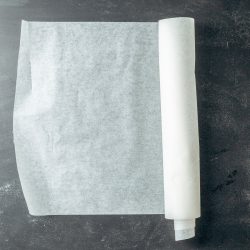
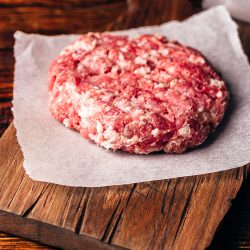
![close view inside hot operational household, Can You Bake With Aluminum Foil? [Is It Safe?]](https://kitchenseer.com/wp-content/uploads/2022/11/close-view-inside-hot-operational-household-250x250.jpg)
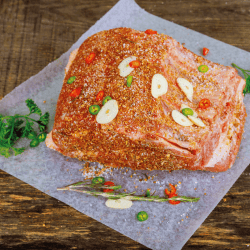
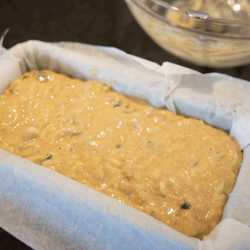
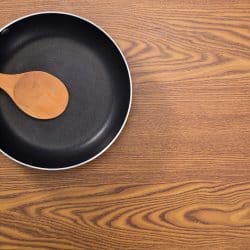
As someone who has used waxed paper for decades to line cake pans before parchment became the trendy new thing it seems like your warning against it is a bit much. All of my peers and their elders have somehow managed to survive scary, scary waxed paper when baking.